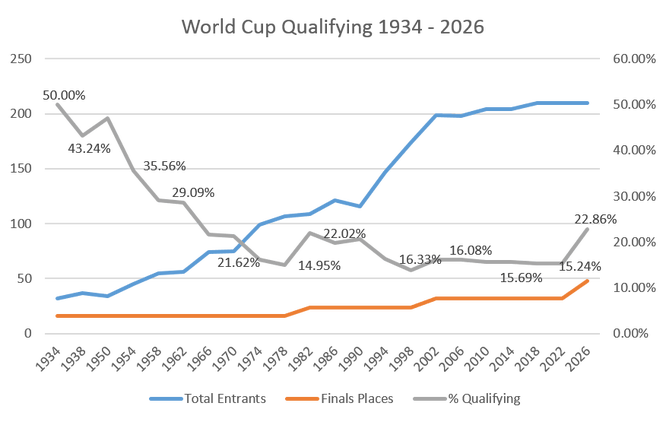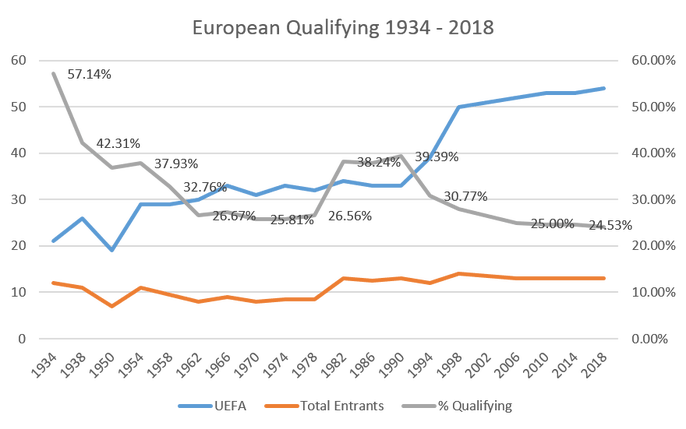FIFA recently announced that the World Cup Finals will be expanding from 32 teams to 48 for the 2026 World Cup. This decision has been largely criticised. Fears of diluting the quality and player burn-out are commonly cited as reasons to oppose the move.
From the organiser’s perspective, the World Cup is big business. Broadcasting revenue alone from the most recent tournament in Brazil was worth $2.4 billion. In total, FIFA made a profit of approximately $2.6 billion from the 2014 tournament. Expanding the tournament seems like a no-brainer.
There is another reason to expand the competition, which has been rather overlooked. There are many more national associations now than there were even twenty years ago.
A historical analysis of previous World Cup qualifications can help understand the evolution toward greater numbers of national associations. Starting in 1934 (the inaugural tournament in 1930 was invitation only), 1 out of 2 countries entering the qualification stage reached the Finals in Italy. This ratio has never been topped. The graph below plots the number of entrants, number of team qualifying (left-hand axis) and the percentage of countries qualifying (right-hand axis) from 1934 to 2026 (assuming the number of associations remains at 210 for the 2022 and 2026 tournaments).
Consider the UEFA confederation alone is worthwhile.
From a European perspective, an increase in the number of UEFA places must be a priority. The second graph below shows just how hard it has become to qualify for the World Cup as a UEFA member, with just 13 places for 54 countries trying to get to Russia 2018. This compares very poorly to the 13 spots available for Italia ’90 when just 33 countries entered the qualification phase.


 RSS Feed
RSS Feed